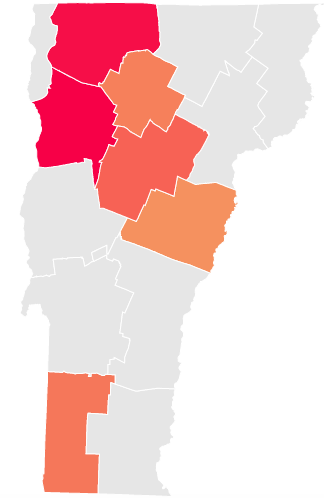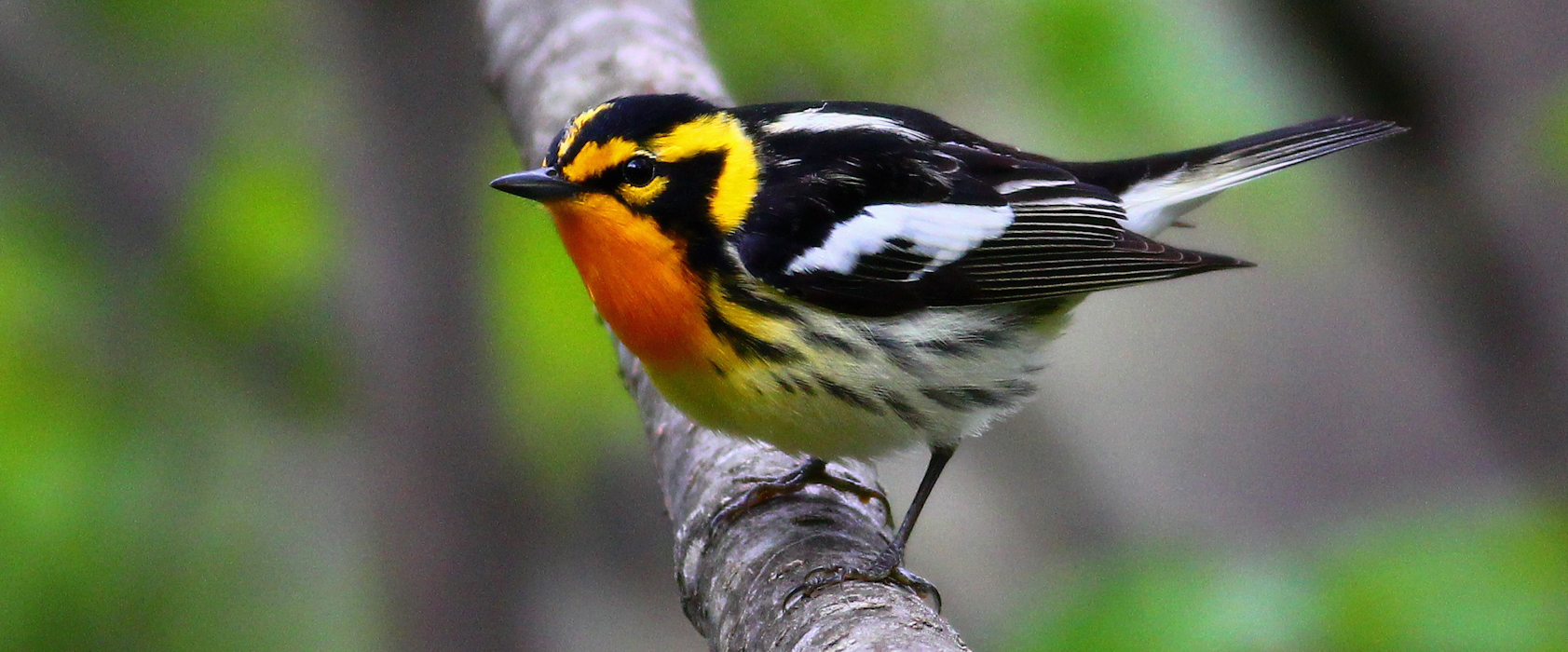Pilot Year a great success!
With the first season of Birder Broker wrapped up, we wanted to take the time to thank everyone involved for their enthusiasm for the project that made such a fantastic pilot year possible. From birders that lent their birding knowledge and data collection skills, to landowners who welcomed birders they’d never met before onto their land and into their homes with open arms, we are extremely grateful to you all. We would also like to take this moment to look back on the successes from our pilot year of the program, as well as share some preliminary data, birding highlights, and plans for next season.

Map of the Birder Broker checklists reported to Vermont eBird by county, with counties in red showing higher species totals.
First, a look at the numbers:
In our first year, Birder Broker paired 29 landowners with 26 experienced birders and received 41 Vermont eBird checklists from birder-landowner pairs in six Vermont counties. Over the course of our survey period, birders documented 1,761 individual birds totaling a whopping 92 species! Overall, birders reported 29 species on average per property, with one property reporting a grand total of 58 different species.
From Great Blue Heron rookeries to Hermit Thrush nests, birder-landowner pairs had plenty of exceptional bird encounters during the 2019 breeding season. Using the eBird Mobile app, nearly 90% of birder-landowner pairs created rich eBird checklists containing photos, audio recordings, and ‘Breeding Codes’ noting potential or confirmed breeding activity of birds. These data are crucial to understanding where and when different species of birds are raising young in the state, and this kind of information has historically been very sparse on private lands. Other exciting species documented during the first season of Birder Broker include Black-billed Cuckoo, nesting Mourning Warblers, Ruffed Grouse families, and a Black Bear family that (understandably) cut one Birder Broker bird walk short!
As successful as our pilot year was, we hope to do things even bigger and better in Birder Broker’s second season. We were encouraged to hear that all Birder Broker participants that responded to our end-of-season survey would recommend this program to others in the future. Thanks to much helpful feedback from these surveys and from conversations with birders and landowners, we have identified a few key areas to work on for the 2020 season including…
- Exploring strategies for recruiting participants, especially expert birders so that we can increase the number of matches we’re able to make
- Getting the word out earlier so that birders and landowners have a bit more pre-season time to prepare for their surveys
- Providing birders with additional training on how to use the eBird app and improve their reporting through the use of breeding codes and other eBird features
In alignment with these focus areas, we would like to set some ambitious goals of partnering 30 or more birders with 30 or more landowners, contributing 60 or more complete Vermont eBird checklists to the Birder Broker eBird account, and hosting 2 eBird Mobile training sessions for birders and landowners alike.
Last but not least, we would like to introduce a new member to the Birder Broker team, Emily Anderson! Emily is the new Citizen Science Outreach Naturalist serving with ECO AmeriCorps at the Vermont Center for Ecostudies, and she will be helping coordinate Birder Broker as it enters its second year.
Between the promising results and excellent feedback, we believe that Birder Broker has the ability to make a huge impact in Vermont. Connecting landowners and birders offers many opportunities to inventory previously unexplored private forest land, and educate members of our community about the avian biodiversity on their land and the role land management plays in supporting it. Our desired long-term outcome is three-fold. We aim to obtain data on breeding bird population trends on private lands, provide landowners with that data to use in their management plans, and build a larger community around bird conservation.
We hope that you are still interested in joining us next year. We will release updates about enrollment information in late winter, so stay tuned!
In the meantime, if you would like to learn more about forest birds in Vermont, check out Audubon Vermont’s Healthy Forest Initiative homepage or read the Vermont Center for Ecostudies’ Status of Vermont Forest Birds Report.







